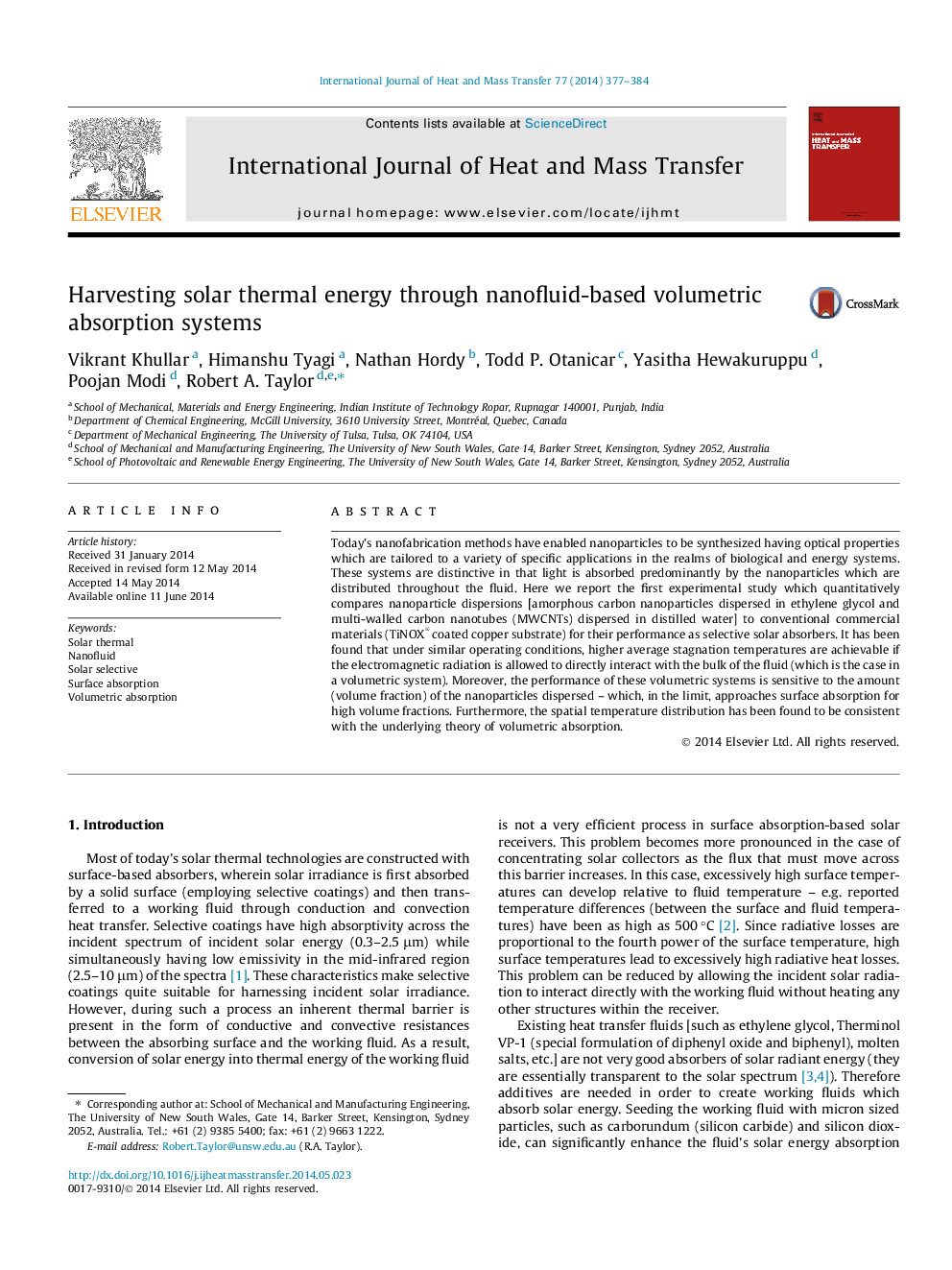| Article ID | Journal | Published Year | Pages | File Type |
|---|---|---|---|---|
| 657800 | International Journal of Heat and Mass Transfer | 2014 | 8 Pages |
Today’s nanofabrication methods have enabled nanoparticles to be synthesized having optical properties which are tailored to a variety of specific applications in the realms of biological and energy systems. These systems are distinctive in that light is absorbed predominantly by the nanoparticles which are distributed throughout the fluid. Here we report the first experimental study which quantitatively compares nanoparticle dispersions [amorphous carbon nanoparticles dispersed in ethylene glycol and multi-walled carbon nanotubes (MWCNTs) dispersed in distilled water] to conventional commercial materials (TiNOX® coated copper substrate) for their performance as selective solar absorbers. It has been found that under similar operating conditions, higher average stagnation temperatures are achievable if the electromagnetic radiation is allowed to directly interact with the bulk of the fluid (which is the case in a volumetric system). Moreover, the performance of these volumetric systems is sensitive to the amount (volume fraction) of the nanoparticles dispersed – which, in the limit, approaches surface absorption for high volume fractions. Furthermore, the spatial temperature distribution has been found to be consistent with the underlying theory of volumetric absorption.
Graphical abstractFigure optionsDownload full-size imageDownload as PowerPoint slide
